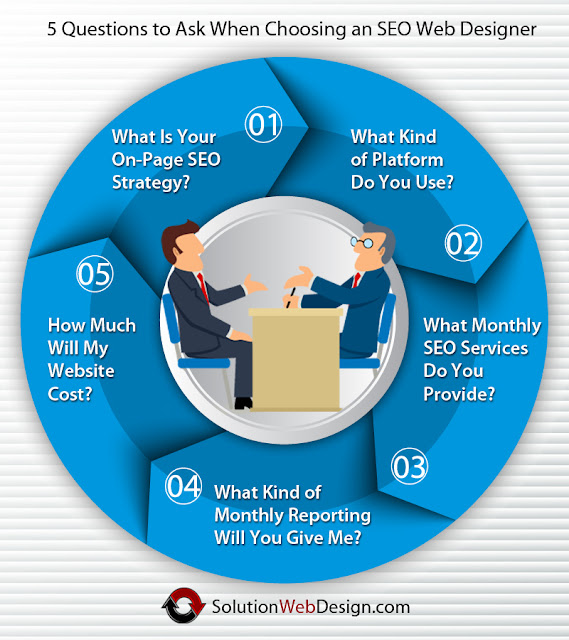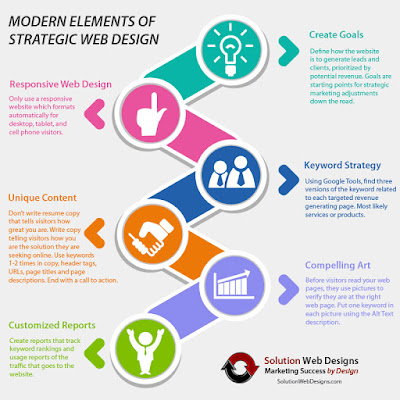Ten Ways to Improve Your Website
There's no getting around it, small business owners must have a corresponding website that stands head and shoulders above the competition, and this all begins and ends with an intuitive design. A website that's well-designed, boasting easy-to-navigate elements and other user-centric touches, remains one of the best ways to market a small business and brings with it additional benefits such as being readily available to be found by potential customers who are searching for services.
With an employment market that hasn't been too explosive regarding new opportunities, more and more people are turning to home-based startup service businesses - and why not? There is an almost infinite number of products or services you can offer from the comfort of your home, eliminating the need to pay for office space - but that doesn't eliminate the need to develop ways to get your business noticed.
It goes without saying that the first avenue to consider here is a website. In fact, we'll go one further, and say that without a website supporting your small business, a large amount of revenue is going to be lost to competitors that do boast dynamic web portals. Unless you consider yourself a small business owner who doesn't need or want to make money or grow your brand, a website is a must. If you're just getting your feet wet in the online marketing/Internet pool (shame on you!) and are concerned with out-of-pocket costs, we're here to tell you that building a small business website or e-commerce store is easier than ever today.
Building your own website doesn't cost much money, you don't need to know how to "code" from scratch, your online store isn't restricted to business hours, and it's one of the best means of free advertising. Here's one of the first things you need to understand when planning your small business website: Having one is not just about selling your goods and services, it's also very much about providing something of value to potential customers.
Before we delve into the top 10 ways to improve the design of your website, let's go over some principles from a leading web design agency. Indeed, much like the phrase "Beauty is in the Eye of the Beholder," what is considered "effective" with regard to web design is judged by the site's users and its owners. There are many factors that affect the usability of a website, and it's not just about looks - it's very much about function (how easy it is to use).
If the design of your website is not up to snuff, there is a chance it can perform poorly by exhibiting sub-optimal Google Analytics metrics (for example, low time on site, high bounce rates, low pages-per-visit and low conversions). The question then becomes, what makes good web design? In our experience, it comes down to:
- Purpose - Your site's design should cater to the needs of the user.
- Communication - The information on your site must be easy to read and digest.
- Typefaces - Make sure the fonts you're using for copy are easy to make out.
- Colors - A well thought-out color palette can go a long way to enhance the user experience.
- Images - Choosing the right images for your website can help with brand positioning and connecting with your target audience.
- Navigation - How easy is it for visitors to take action and jump around your website?
- Grid-Based Layouts - Arrange content into columns, sections, and boxes that line up and feel balanced.
- "F" Pattern Design - Eye tracking studies have shown that people scan computer screens in an "F" pattern (in other words, most of what is seen is in the top and left of the screen, while the right side of the screen is rarely viewed).
- Load Time - Everybody hates a website that takes forever to load.
1. Keep it Simple
Have you ever heard of the K.I.S.S. method? No, we're not referring to the legendary rock band…K.I.S.S. stands for "Keep it Simple, Stupid," and it's been permeating in the marketing world for quite some time. By no means are we calling you or anyone else "stupid" - but the point is that no one wants to wade through material they aren't interested in to get to the information they want on a website. Currently with "everything on demand," prospective customers will simply move on from your website if they can't find what they're looking for immediately.
Keep things simple and make it easy to find your products and services.
2. Important Content Should Remain at the Top
Scrolling to the bottom of a long homepage that never seems to end? No one wants to do that. Make sure your most vital information can be found at or near the top, or above the "fold" - for example, anything that can be seen on the page before visitors begin scrolling.
3. Prioritize Navigation Links
A complete index of your website in the menu bar isn't necessary; keep the main links intuitive and easy to find and use.
4. Eliminate Clutter
Internet surfers of today don't gravitate to "Homer Simpson"-esque websites wherein a mountain of "stuff" is stuck on a website because it happens to "look cool." If there is too much going on visually, the visitor will be overwhelmed, and he or she will move on to competitors' sites who may have more straightforward presentations.
5. Add Calls-to-Action
If you've never heard the term "CTA" or Call-to-Action before, it's long overdue that you make yourself comfortable with it. A CTA is the "beckoning" for customers on your site to take advantage of a special offer, idea or something you really want them to see. This gets them to click on a link, which in turn gives you their contact information; a CTA should be very visible without being overwhelming, so consider phrases like "For more information, click here" or "Call us today for more information."
6. Be Mobile-Friendly
Another element of modern-day online marketing that's not going away anytime soon - if ever - is mobile. Far too many business owners create great websites only to discover they aren't compatible with mobile devices. You need to create a website that automatically adapts for mobile, and make sure that it looks good and works properly on potential customers' smartphones.
7. Use SEO
Here's another modern marketing term you should become very familiar with: SEO (or Search Engine Optimization). Why? In order to be found and listed by major search engines like Google, your website should be "optimized" so searched keywords bring prospective customers to your website first.
8. Make it Load Fast
We touched on this a bit earlier, but it's worth repeating: You need a website that is not only easy to use but also fast, as no one wants to sit around waiting for a page to load. To accomplish this, you will need to ensure the right server infrastructure and bandwidth to support a fast site and avoid using a plethora of graphics that eat uploading time.
9. Use Professional Branding
What do we mean by this? Your website must have a professional appearance - colors should match your business logo, and other aspects should remain consistent with your brand.
10. Provide Valuable Content
Finally, it is imperative that you add valuable content to your website, and it should be content that's relevant to your business and be of interest to prospects. The better your content, the easier it is to find on search engines, to boot.
It is easy to create a beautiful and functional website simply by keeping these design elements in the back of your mind.
About the Author
Craig Corbel is the VP of Marketing at Solution Web Designs, a lead web design and online marketing firm in New York.




Comments
Post a Comment